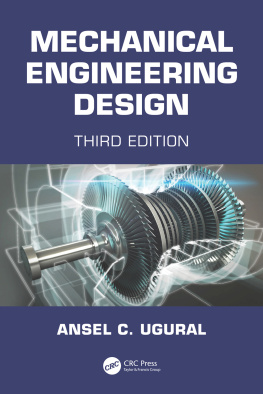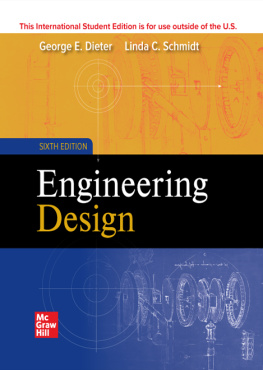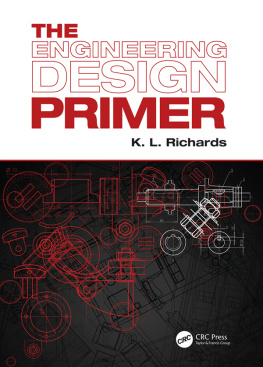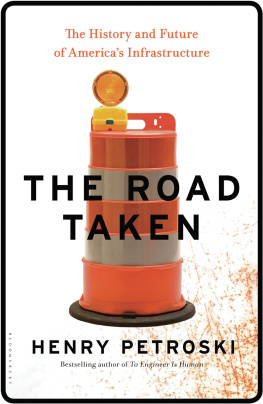
Table of Contents
List of Tables
- Chapter 01
- Chapter 02
- Chapter 03
- Chapter 04
- Chapter 05
- Chapter 06
- Chapter 07
- Chapter 08
- Chapter 09
- Chapter 10
- Chapter 11
- Chapter 12
List of Illustrations
- Chapter 01
- Chapter 02
- Chapter 03
- Chapter 04
- Chapter 05
- Chapter 06
- Chapter 07
- Chapter 08
- Chapter 09
- Chapter 10
- Chapter 11
- Chapter 12
Guide
Pages
HIGHWAY ENGINEERING
Third Edition
Martin Rogers and Bernard Enright
College of Engineering & Built Environment, Dublin Institute of Technology
This edition first published 2016
2003, 2008 by Blackwell Publishing Ltd.
2016 by John Wiley & Sons, Ltd.
Registered office
John Wiley & Sons, Ltd, The Atrium, Southern Gate, Chichester, West Sussex, PO19 8SQ, United Kingdom.
Editorial offices
9600 Garsington Road, Oxford, OX4 2DQ, United Kingdom.
The Atrium, Southern Gate, Chichester, West Sussex, PO19 8SQ, United Kingdom.
For details of our global editorial offices, for customer services and for information about how to apply for permission to reuse the copyright material in this book please see our website at www.wiley.com.
The right of the author to be identified as the author of this work has been asserted in accordance with the UK Copyright, Designs and Patents Act 1988.
All rights reserved. No part of this publication may be reproduced, stored in a retrieval system, or transmitted, in any form or by any means, electronic, mechanical, photocopying, recording or otherwise, except as permitted by the UK Copyright, Designs and Patents Act 1988, without the prior permission of the publisher.
Designations used by companies to distinguish their products are often claimed as trademarks. All brand names and product names used in this book are trade names, service marks, trademarks or registered trademarks of their respective owners. The publisher is not associated with any product or vendor mentioned in this book.
Limit of Liability/Disclaimer of Warranty: While the publisher and author(s) have used their best efforts in preparing this book, they make no representations or warranties with respect to the accuracy or completeness of the contents of this book and specifically disclaim any implied warranties of merchantability or fitness for a particular purpose. It is sold on the understanding that the publisher is not engaged in rendering professional services and neither the publisher nor the author shall be liable for damages arising herefrom. If professional advice or other expert assistance is required, the services of a competent professional should be sought.
Library of Congress Cataloging-in-Publication data applied for
ISBN: 9781118378151
A catalogue record for this book is available from the British Library.
Wiley also publishes its books in a variety of electronic formats. Some content that appears in print may not be available in electronic books.
Cover image: vladimir zakharov/Gettyimages
Preface
Highway Engineering is intended primarily as a text for undergraduate students of civil engineering while also touching on topics that may be of interest to surveyors and transport planners. First and foremost, however, it must provide an essential text for those wishing to work in the area, covering all the necessary basic foundation material needed for practitioners in highway engineering at the entry level to industry. In order to maximise its effectiveness, however, it must also address the requirements of additional categories of student: those wishing to familiarise themselves with the area but intending to pursue another speciality after graduation and graduate students requiring necessary theoretical detail in certain crucial areas.
The aim of the text is to cover the basic theory and practice in sufficient depth to promote basic understanding while also ensuring extensive coverage of all topics deemed essential to students and trainee practitioners. The text seeks to place the topic in context by introducing the economic, political, social and administrative dimensions of the subject. In line with its main task, it covers central topics such as geometric, junction and pavement design while ensuring an adequate grasp of theoretical concepts such as traffic analysis and economic appraisal.
The book makes frequent reference to the Department for Transports Design Manual for Roads and Bridges and moves in a logical sequence from the planning and economic justification for a highway through the geometric design and traffic analysis of highway links and intersections to the design and maintenance of both flexible and rigid pavements. To date, texts have concentrated either on highway planning/analysis or on the pavement design and maintenance aspects of highway engineering. As a result, they tend to be advanced in nature rather than introductory texts for the student entering the field of study for the first time. This text aims to be the first UK textbook that meaningfully addresses both traffic planning/analysis and pavement design/maintenance areas within one basic introductory format. It can thus form a platform from which the student can move into more detailed treatments of the different areas of highway engineering dealt with more comprehensively within the more focused textbooks.
explains the basic concepts on the basis of traffic demand modelling and outlines the four-stage transport modelling process. The third edition has expanded this chapter to include a number of numerical examples detailing how the four different stages of the classical transportation model work.
, a new addition, deals comprehensively with sustainable transport planning, including the design and assessment of pedestrian footpaths, cycle lanes and bus lanes within an urban context.
In overall terms, the text sets out procedures and techniques needed for the planning, design and construction of a highway installation while setting them in their economic and political context.
Every effort has been made to ensure the inclusion of information from the most up-to-date sources possible, particularly with reference to the most recent updates of the Design Manual for Roads and Bridges and the Highway Capacity Manual. However, the regularity with which amendments are introduced is such that by the time this text reaches the bookshelves, certain aspects may have been changed. It is hoped, however, that the basic approaches underlying the text will be seen to remain fully valid and relevant.
For the third edition I have a co-author Dr. Bernard Enright who has been an invaluable colleague and co-worker on the text. This edition would not have been completed without his contribution.
Martin Rogers
Sources
Extracts from British Standards are reproduced with the permission of the British Standards Institution. BSI publications can be obtained from BSI Customer Services, 389 Chiswick High Road, London W4 4AL, United Kingdom. Tel. +44 (0) 20 8996 9001. Email:
Extracts from Highway Capacity Manual 1985, 1994 and 2010, reproduced with permission of the Transportation Research Board. The National Academies of Sciences, Engineering, Medicine, Washington, DC, 1985, 1994 and 2010.
Next page







